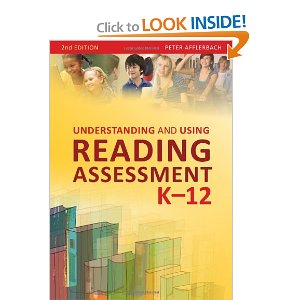 I just finished my master’s in literacy course about assessment. There are two big take-aways that we all agreed on, and today I’ll write about the first–the CURRV method of assessing your assessments.
I just finished my master’s in literacy course about assessment. There are two big take-aways that we all agreed on, and today I’ll write about the first–the CURRV method of assessing your assessments.
Consequences of Assessment: Reading assessments must have the consequence of helping students develop as readers. There are many consequences–both positive and negative–of reading assessments ranging from increased student self-esteem to robbing valuable teaching time from the students.
Usefulness of Assessment: We need all types of assessments, but we need to determine their usefulness before we give it. At my last school we had to give spelling inventories to our students–an assessment I always found quite useful for informing instruction and creating a snapshot of each student from varied assessments. I recently found out that many teachers had no idea why we gave the assessment and so it was useless to them.
Roles and Responsibilities Realated to Assessment: Teacher roles may include encouraging students to take the test seriously or teaching the testing genre to the student. Students roles may include preparing to take the assessment.
Reliability of Assessment: Is the assessment going to be affected by teacher state of mind? Then it is not reliable unless checks and balances are put into place to make assessment practices consistent.
Validity of Assessment: The intuitive test of validity is asking the question, “Is this worth the time?”
This is an extremely truncated explanation of the CURRV method, and you can find more in Peter Afflerbach’s book, Understanding and Using REading Assessment K-12.